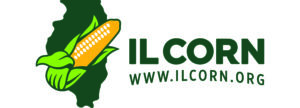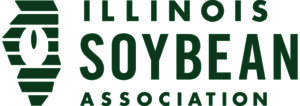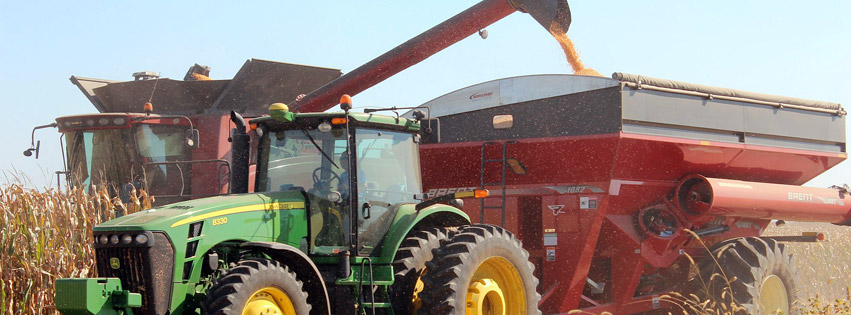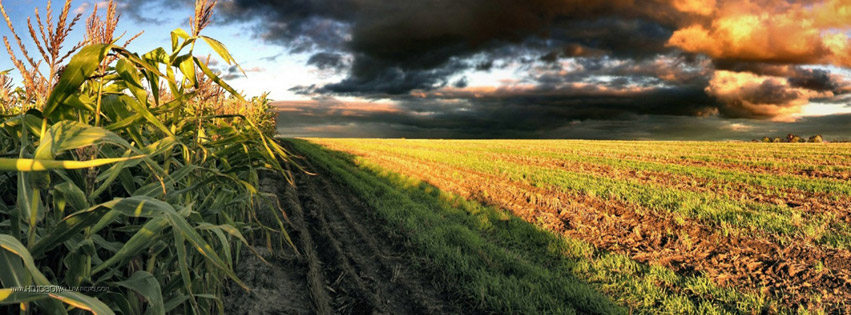Connect on Social Media
Crop Insurance Decision Tool
This program calculates premiums, evaluates insurance payments, and provides historical data useful when making crop insurance decisions for multiple crops. Estimates are for crops in midwest and southeast states. Learn…
Farm Bill What-If Tool
This program calculates Agricultural Risk Coverage for County Coverage (ARC-CO), Price Loss Coverage (PLC) payments, and ARC at the Individual Level (ARC-IC). County yields and market year average (MYA) prices…
Quick Cash Flow Projections
Farm Projection Tool
This program calculates per-acre budgets for different crops and a whole farm budget and includes breakevens. Projected financial statements and return sensitivities are available. The effects of farm level crop…
Recent Features
Visit farmdoc Sections
Crop Insurance Decision Tool
Planting Decision Model
Index Numbers of Illinois Farmland Values
2019 Budgets For All Regions
Latest farmdoc Daily Articles
Forecasting US Field Crop Sector Prosperity
This article presents a model to forecast net return at harvest for the nine field crops that USDA ERS computes an economic cost of production. The model includes last year’s percent net return at harvest, last year’s average return to storing US corn and soybeans, and the ratio of beginning world stocks to last year’s use of the nine crops. These variables forecast a percent net return at 2025 harvest of -20%. Forecasted total net loss for the nine crops combined is $36.4 billion.
Farmer Bridge Assistance Program Payment Rates
The USDA recently announced payment rates for row crops eligible for the Farmer Bridge Assistance Program. Acres planted to corn ($44.36 per acre), soybeans ($30.88), wheat ($39.35), and 16 other eligible commodities should expect to receive FBA payments by the end of February. The average 1,500 acre grain farm in Illinois, with acres planted to corn and soybeans on owned and cash rented farmland, should expect to receive nearly $38 per planted acre or just over $56,000 in total FBA support.
The People Behind the Machines: Precision Agriculture and Farm Service Technician Demand
Precision agriculture technology adoption is reshaping agricultural labor demand, shifting from manual work to technical roles. Analysis shows states with higher precision agriculture use have more farm service technicians per farm and higher technician wages, suggesting technology-driven demand changes. However, weak correlations indicate potential labor shortages and constraints in technician supply persist.
Labor Standards
This article examined labor hours per acre and labor efficiency for crop farms using FINBIN data from 2007 to 2024. Comparing the smallest and largest farm categories, labor hours were significantly lower, and labor efficiency was significantly higher for the large farms. Labor hours per crop acre for the large farms averaged 1.7 hours per acre, while labor cost in proportion of gross farm income was 8.9 percent for the large farms.
The Number and Composition of Legal Entities Engaged in Farming: Initial Evidence from FSA Payment Files
Farm payments are intended to aid farmers by supporting incomes, reducing risk, and achieving conservation goals. However, payments may change farmer behavior in ways that are market distorting (Zulauf 2013). Such changes may include the choice of an individual to farm and the choice of the business structure or legal entity by which that individual engages in farming.
Can China Reduce Soybean Import Demand? Evaluating Soybean Meal Reduction Efforts
China is the world’s largest soybean importer, relying heavily on foreign supplies—primarily from the United States and Brazil—to meet rapidly growing animal feed demand. This article examines whether China’s recent soymeal-reduction policy is putting the country on a path toward greater soybean self-sufficiency. Using multiple data sources, including official Chinese statistics, USDA data, and third-party industry data, we assess changes in soymeal inclusion rates alongside trends in feed production and soybean imports. We find that while soymeal inclusion rates have declined compare with earlier years, the reduction is smaller and less smooth than official figures suggest. Continued growth in feed output has kept total soymeal demand and soybean imports at historically high levels. As a result, near-term impacts on major soybean exporters remain limited, though longer-run demand adjustments cannot be ruled out.
Latest Farm Policy News Articles
Farm Economy to Stabilize in 2026, Ag Economists Predict
As 2026 ushers in a fresh start, agricultural economists say the U.S. farm economy has stopped sliding, but it’s far from fully healed.The December Ag Economists’ Monthly Monitor shows month-to-month…
China’s US Soy Purchases Approach 10 Million Tons
China’s state stockpiler Sinograin bought 10 U.S. soybean cargoes this week, three traders told Reuters on Tuesday. China’s total purchases from the latest U.S. crop were now estimated at 8.5…
Venezuela Turmoil Could Open Opportunities for US Ag
The ouster of Venezuelan President Nicolás Maduro could lead to export opportunities for U.S. ag products, although much depends on the U.S.’ next move and how consumers respond, analysts say.
Gap Between Farm Costs and Prices Received Hits 10-Year High
U.S. farmers are facing one of the widest gaps in a decade between what they pay to produce food and what they earn from selling it. New USDA data released…
USDA Farmer Bridge Assistance Rates Favor Rice, Cotton
The U.S. Department of Agriculture released details on Wednesday about how much row crop farmers will receive next year from a $12 billion aid program, but soybean growers say such…
China Reaches 8 MMT of US Soybeans Purchased in 2025
China has bought at least 8 million tons of US soybeans this year, according to people familiar with the matter, putting the world’s top importer on track to meet a…


















